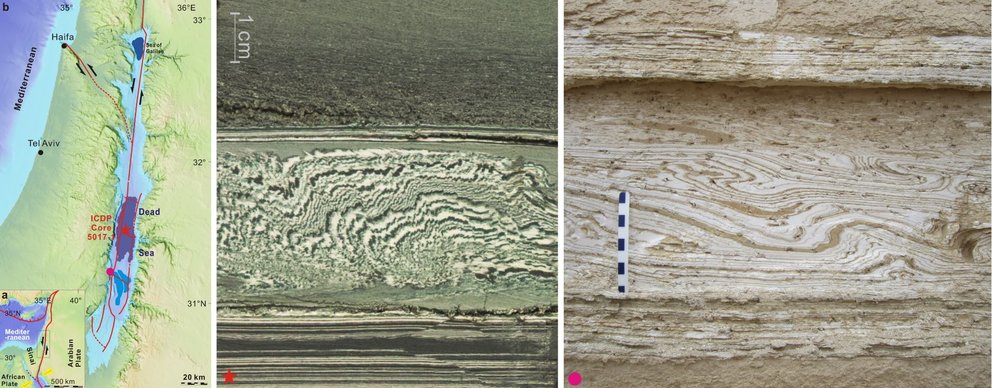DeadSeaQuakeRec: Developing a 220 kyr-long continuous earthquake record based on both in situ and secondary seismogenic sedimentary effects
Funded by the Austrian Science Fund (FWF) (2020-2022; FWF Project Nr. M 2817)
PI (Lise-Meitner Fellow): Dr. Yin Lu
Host: Ass.-Prof. Dr. Jasper Moernaut
Seismology provides a 100-years worldwide earthquake record complemented by several 100s-yrs of historical reports and 1000s-yrs record in paleoseismic trenching. In combination with long-term fault slip rate estimates, these are used in seismic hazard assessment. However, strong spatiotemporal variation in slip rates and the potential of earthquake supercycles suggest a significant variability in seismic cycles over 10000's years leading to a time-variable seismic hazard. Here we aim at recovering a 220 kyr-long seismic record of the Dead Sea Fault, which is capable of generating M~7 earthquakes. We develop new paleoseismic proxies and assess potential forcing factors that may affect the sensitivity of the paleoseismic record. We exploit the Dead Sea archive, through a well-dated ICDP deep core. The obtained continuous paleoseismic record will improve our understanding of the seismic cycle on major transform plate boundaries, and thus improve the basis for seismic hazard assessment. The project is divided into three main research questions: Q1: Is there a relationship between abrupt lake-level change and seismogenic subaqueous slope failures at the Dead Sea? Q2: Can Dead Sea turbidites be used as reliable paleoseismic proxies? Q3: Does the Dead Sea fault show clustered seismicity in which centuries-long quiescence and strain accumulation is separated by periods of enhanced seismicity?

